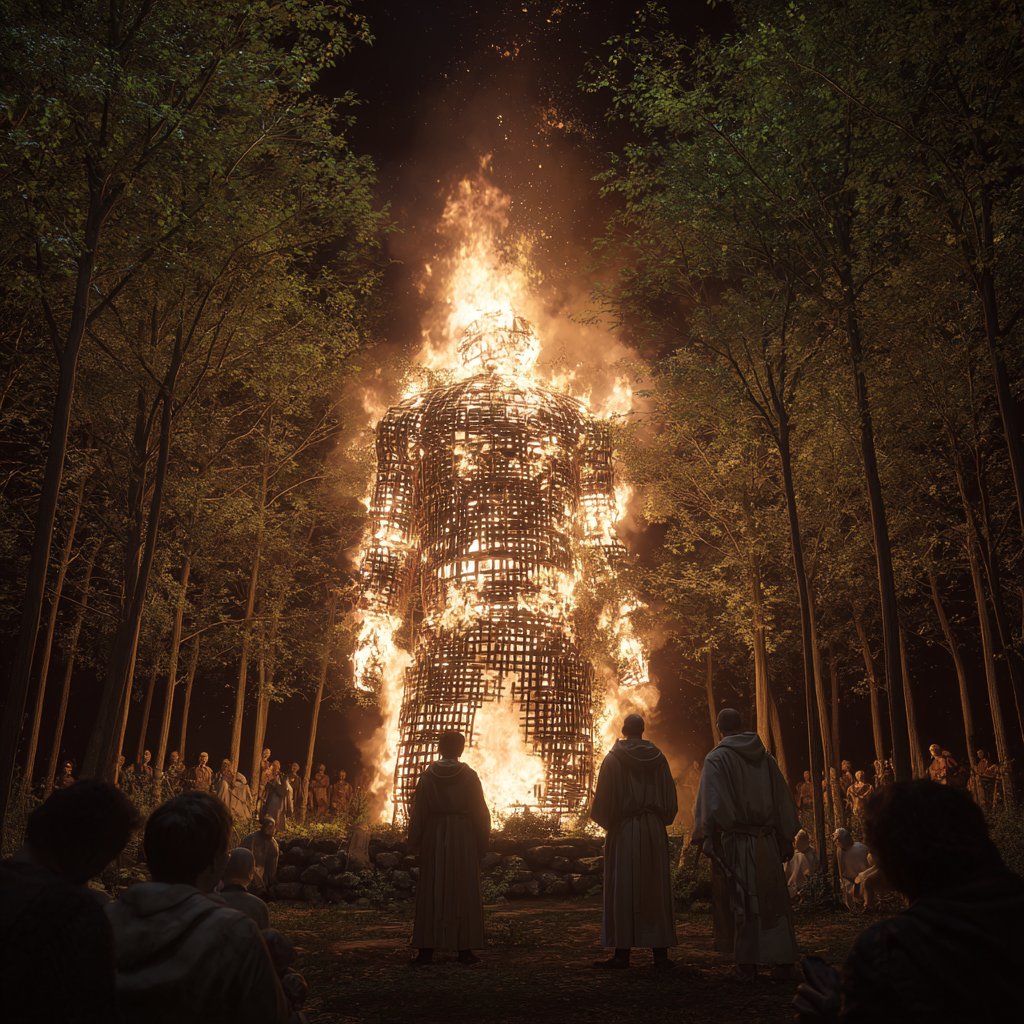Burning of the Wicker Man
Many regions that have old Celtic blood still practise the use of the Wicker Man. The tradition used to be practised more often.
History
The Celts have practised the Wicker Man for centuries. Almost stamped out by the Roman Empire after their attack on the Druids at Anglesey, along with dominating Gaulish France. Established early in their early history the Celts use it as a sacrificial process though done rarely.
Certainly human & animal sacrifice took place though it is rarer than mentioned by Julius Caesar, Strabo, Diodorus Siculus, and Lucan are a few Roman & Greek writers who have mentioned this. To a degree they used second hand accounts rarely if ever seeing this in person, and attributing it as sacrifices to the Gaulish Gods. These gods generally preferred human sacrifices, and if not then animal sacrifices.
Rarely practiced for sure, it is even less used any more partially due to how rare the religious beliefs remain. Most are accredited to the Celts of the British Isles and usually in regions never conquered by the Romans.
Execution
The wicker man is made of a wooden structure in the general shape of a human figure, usually with spaces throughout. Primarily crops are put in these, and the odd livestock too. Rarely, sentient creatures are placed inside the structure, mainly due to the change in how these are viewed by the majority observing the ritual. Though, criminals and prisoners of war are generally fine, especially the former.
Burned at dusk or at the full setting of the sun, the whole structure must burn for the gods to notice.
Components and tools
Wood, and usually kindling throughout (primarily the remains of wheat & barley or similar), make up the structure. A set amount of crops are placed inside to offer as gifts to the gods, and usually a number of different livestock. When it comes to sapient creatures, it is usually criminals and the odd prisoner of war is used, with the former being preferred. This is seen as much as a form of execution, if not showing the gods that the laws of the gods are upheld, and the warriors are honoured.
Axes, sickles and rope are generally used to help build the structure.
Participants
Druids oversee and determine what is to be placed inside, and sometimes other clerics of related faiths are involved. Sometimes Bards are present to tell the stories relating to why the wicker man is built. The nobles are generally involved organising the building and the supply of the sacrifices.
Observance
The Druids deem when it is necessary for a wicker man to be built and known to regularly call for them at Beltane and/or Samhain. They make sure the correct sacrifices are required and for what. Good harvests and a fruitful coming year. A rare wicker man may take place over the year, especially in the case of potential bad harvest and other potential catastrophes. Sometimes these happen after the fact and are trying to prevent it continuing.



Comments